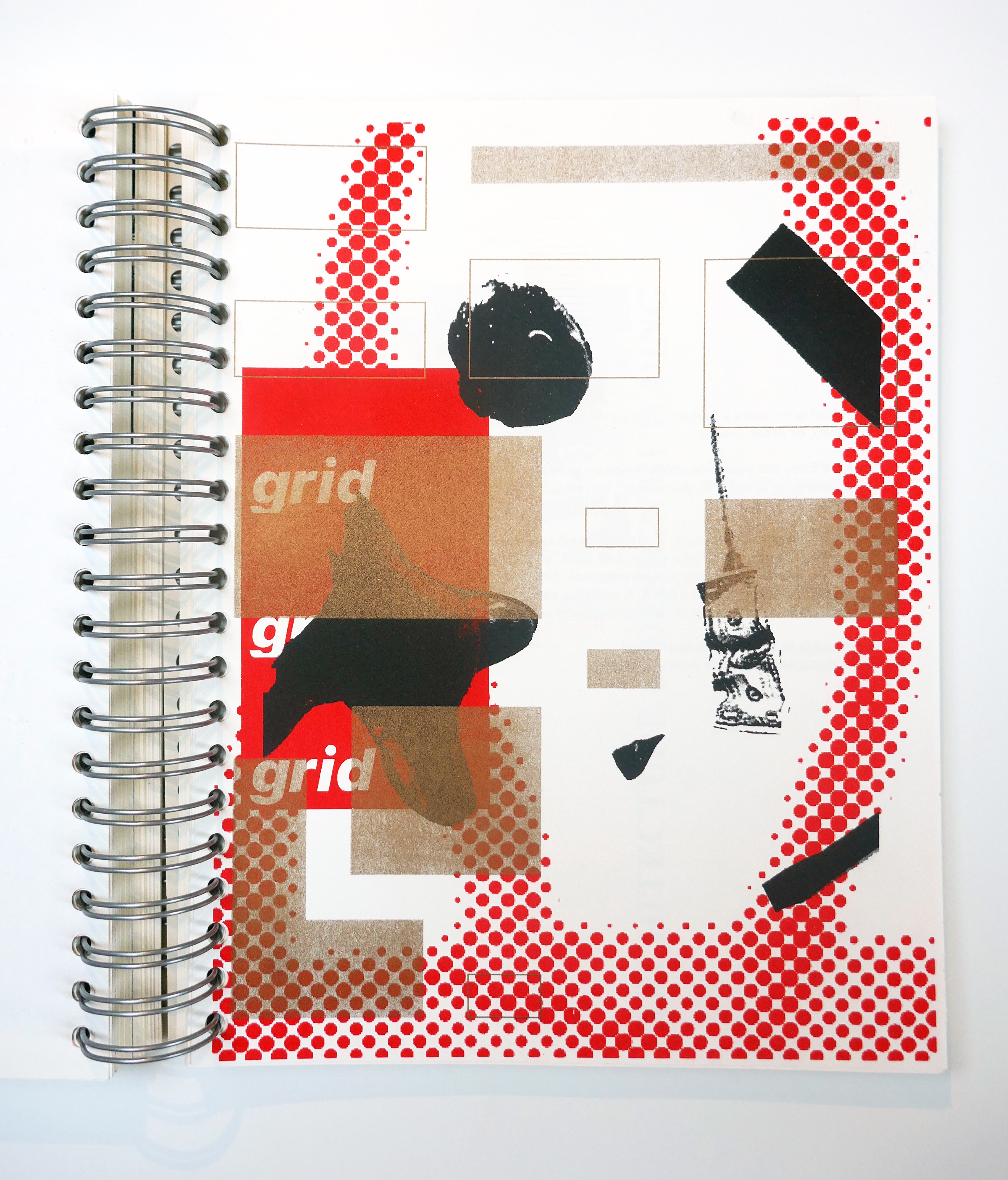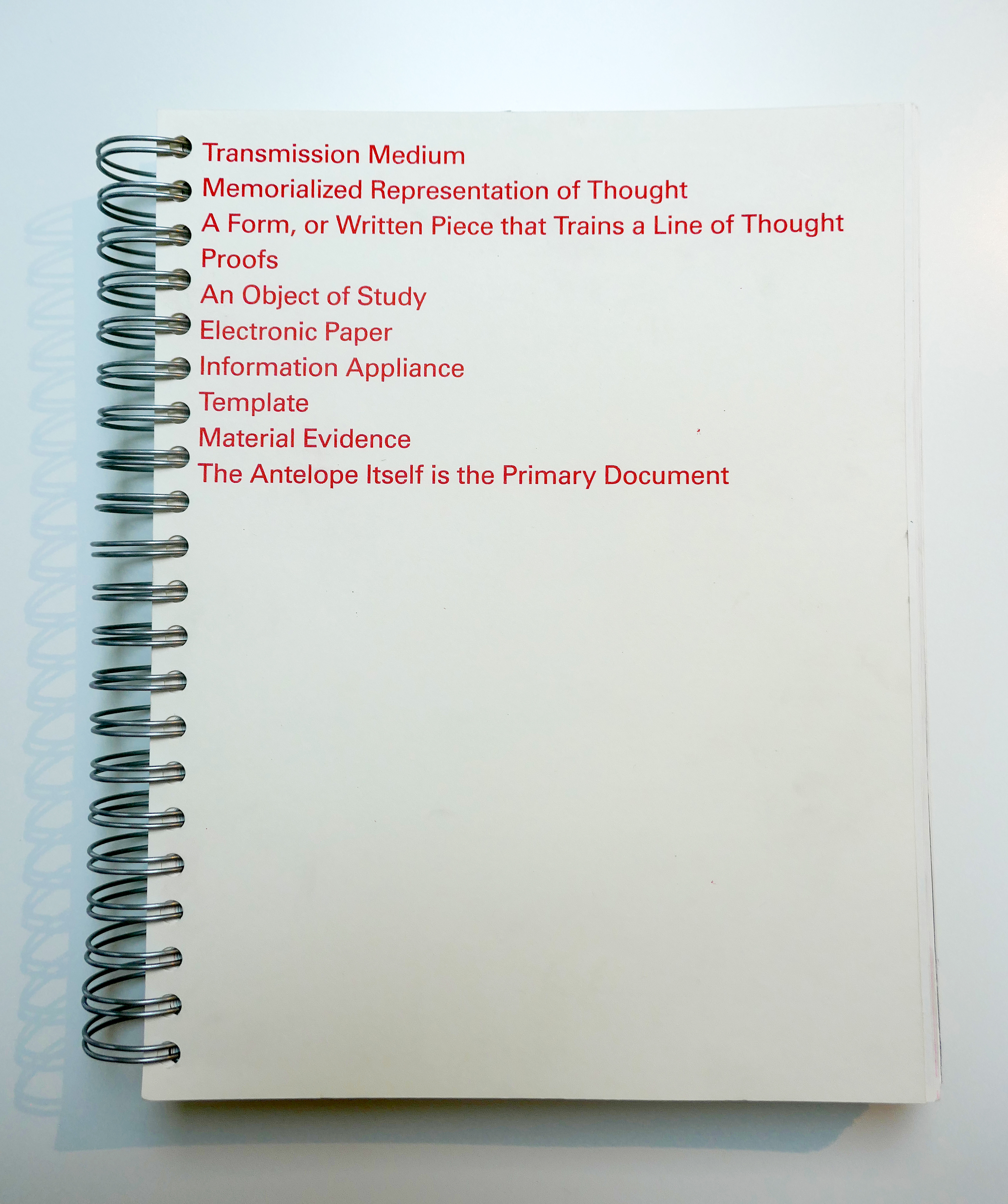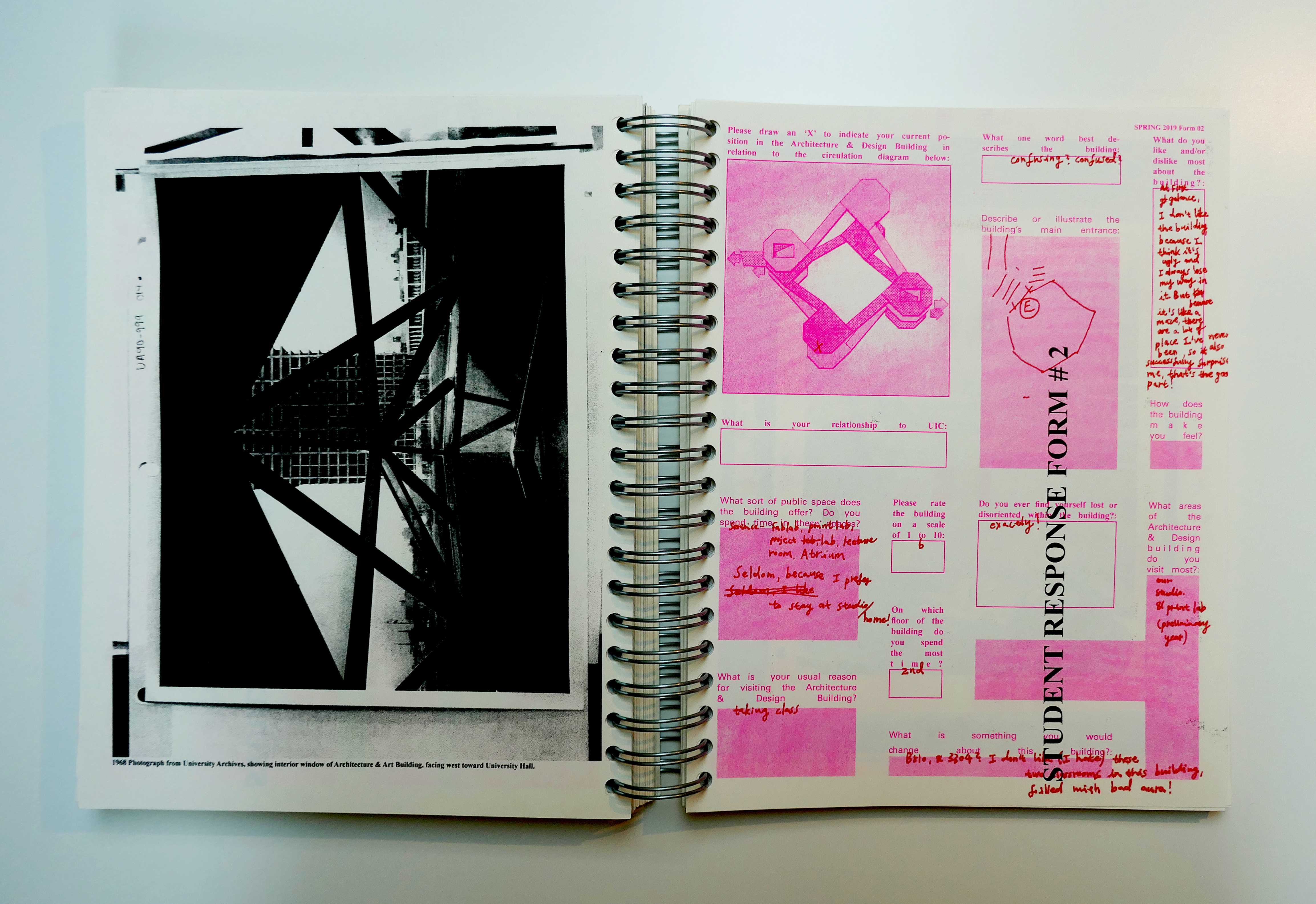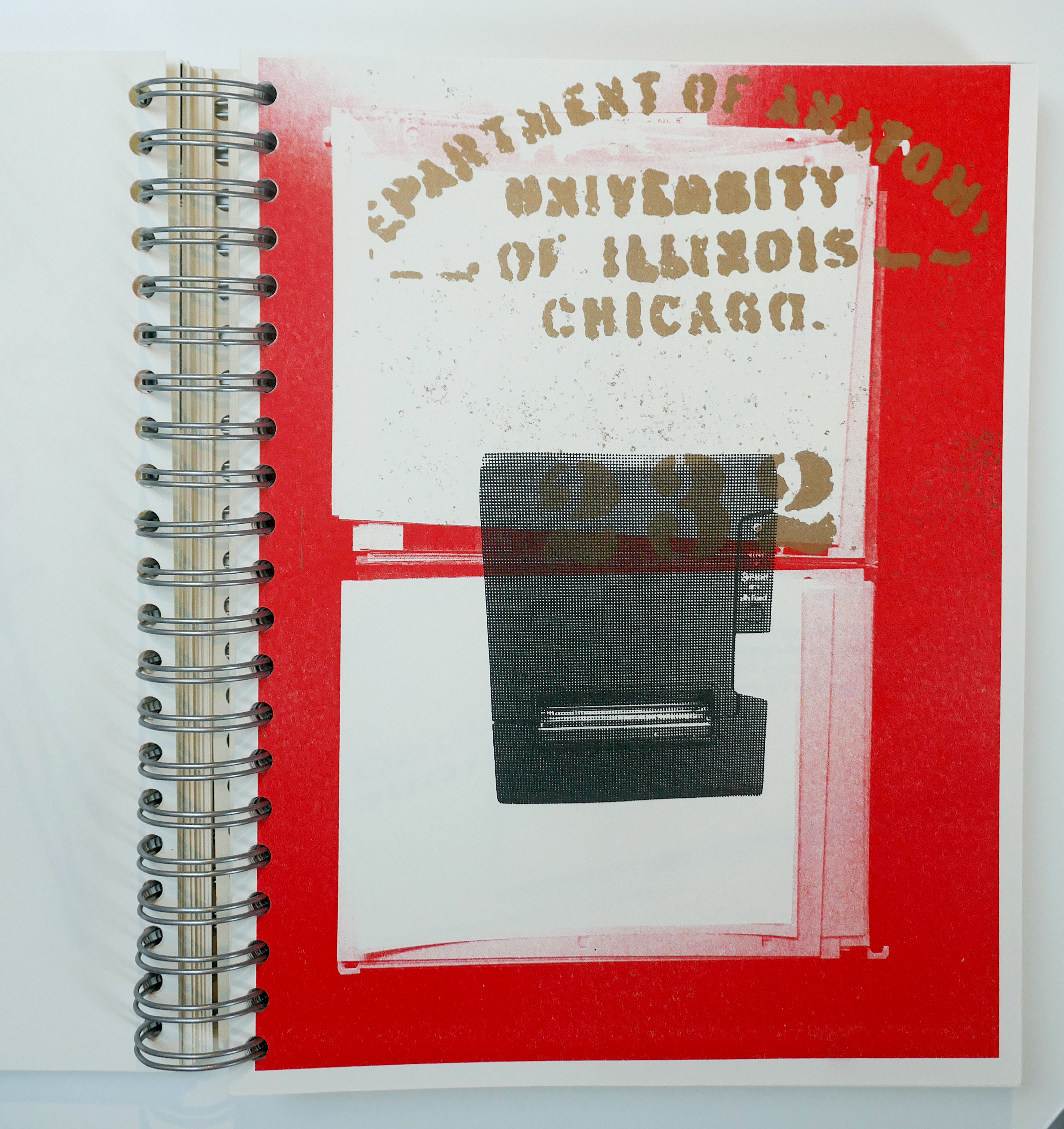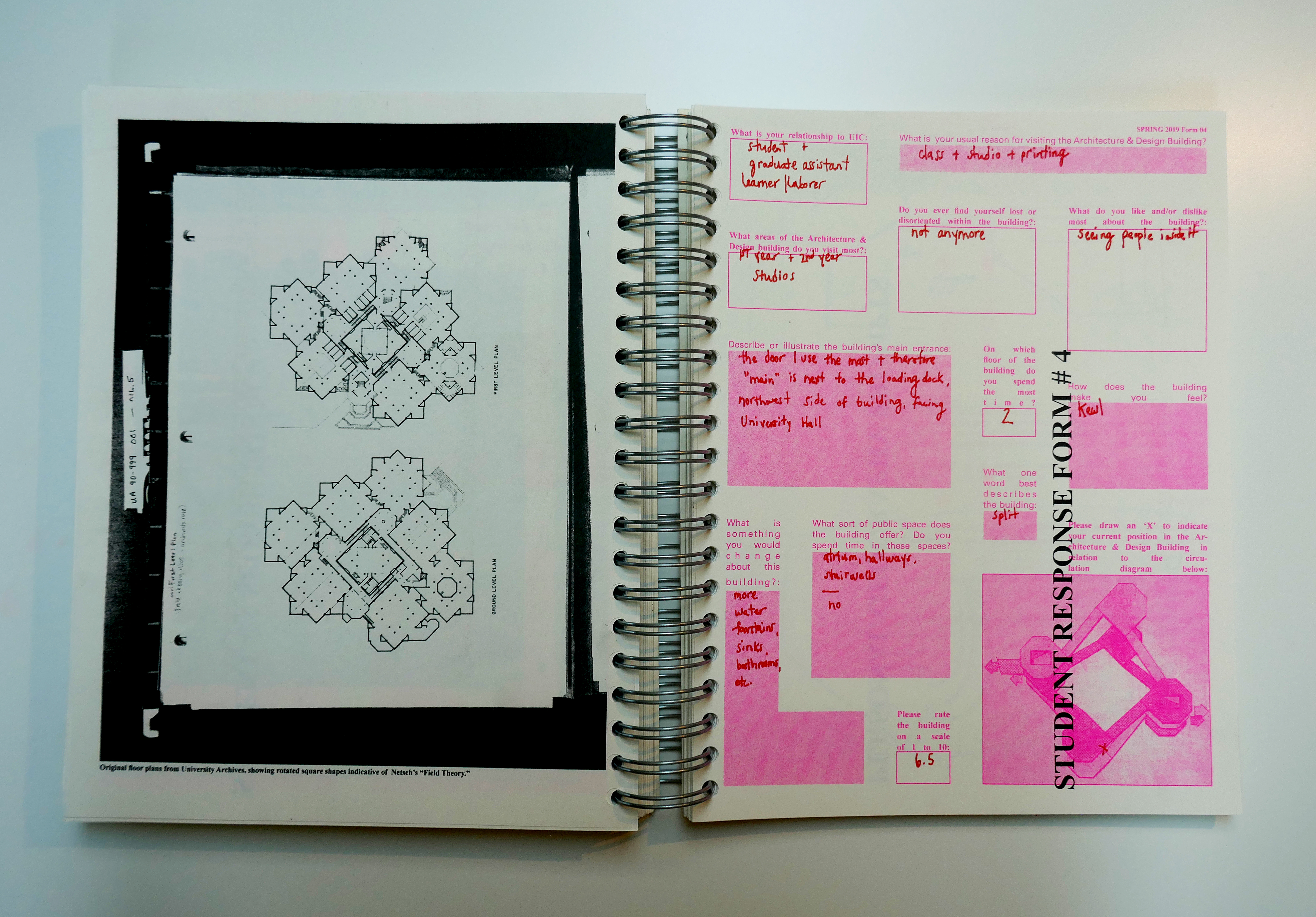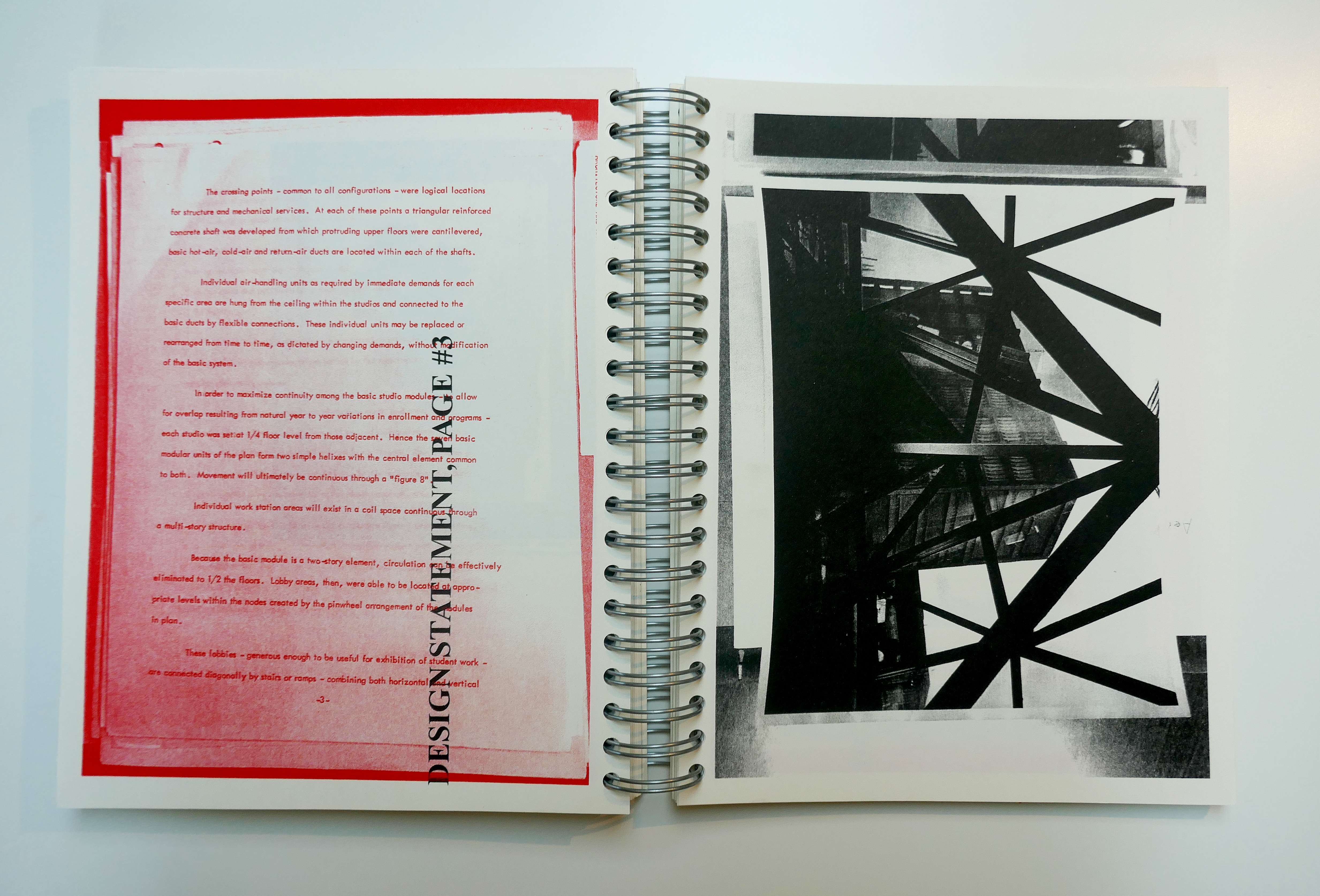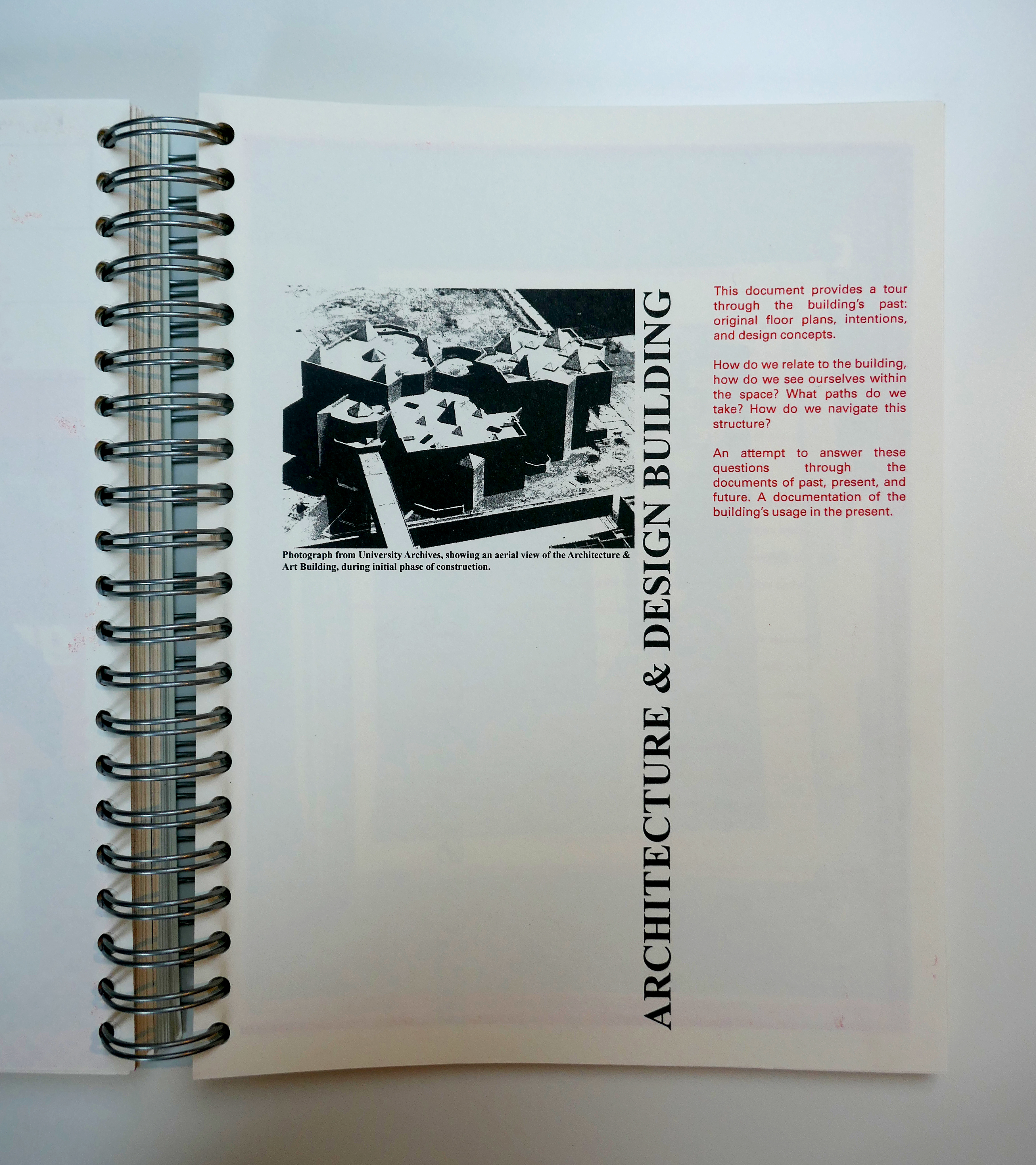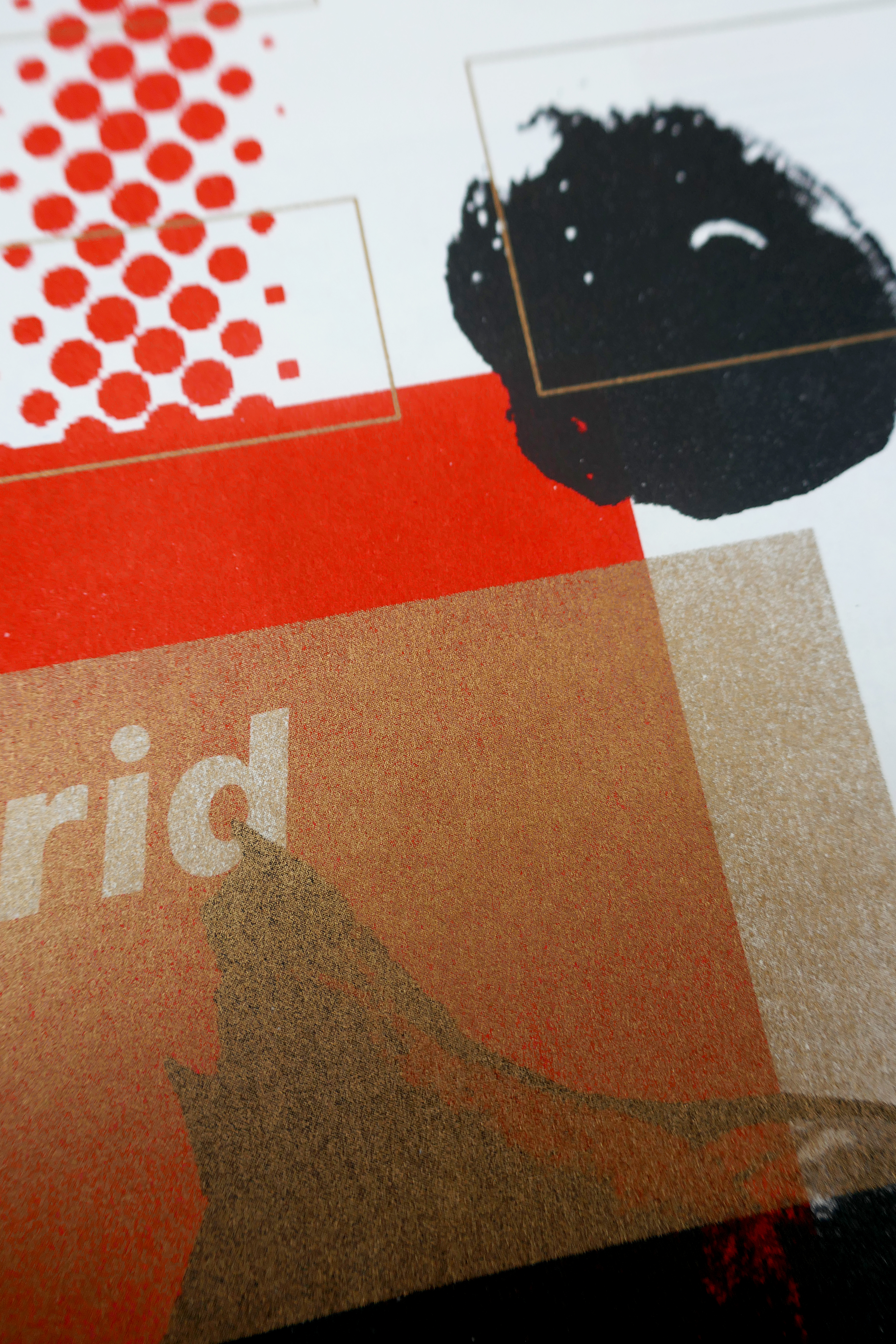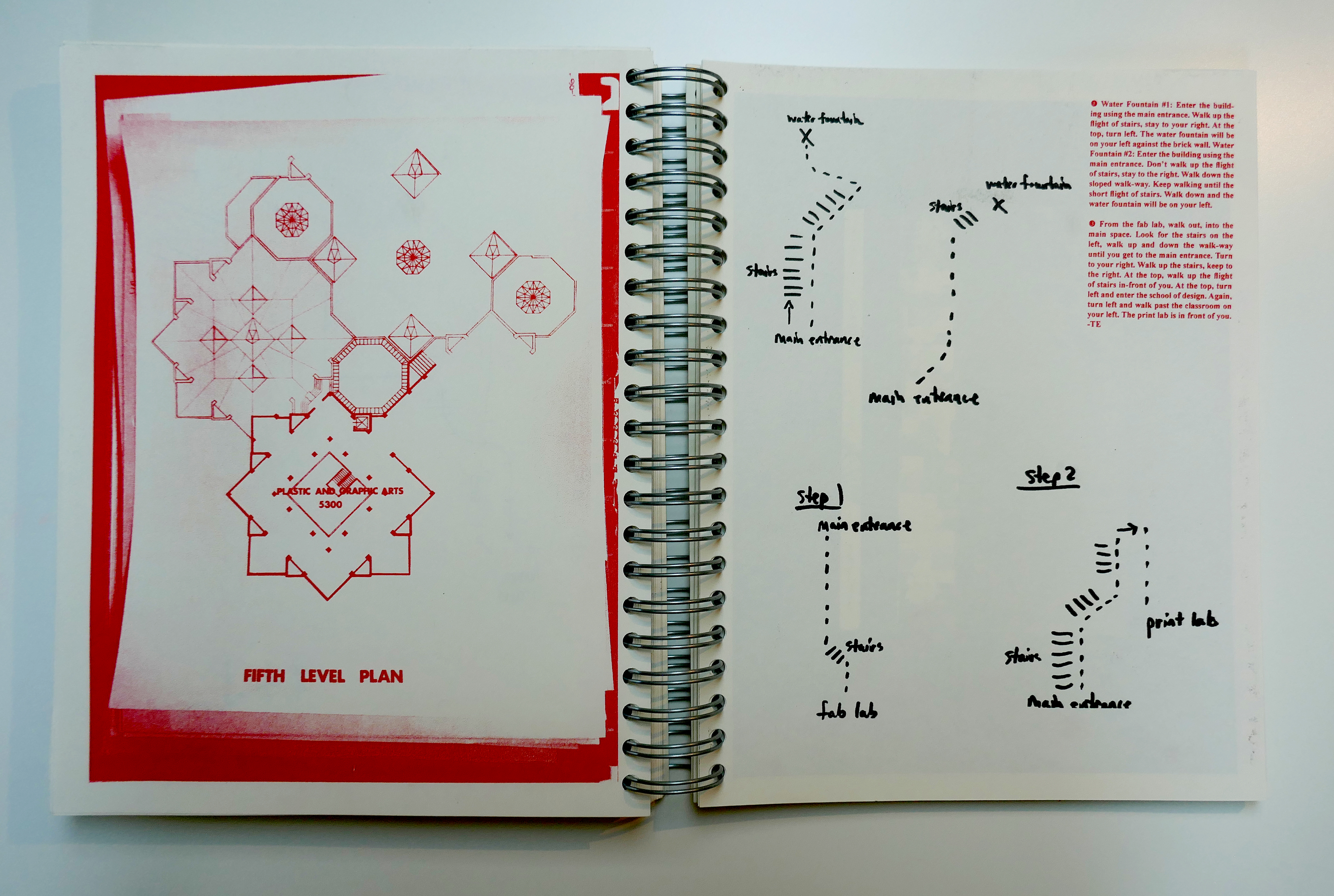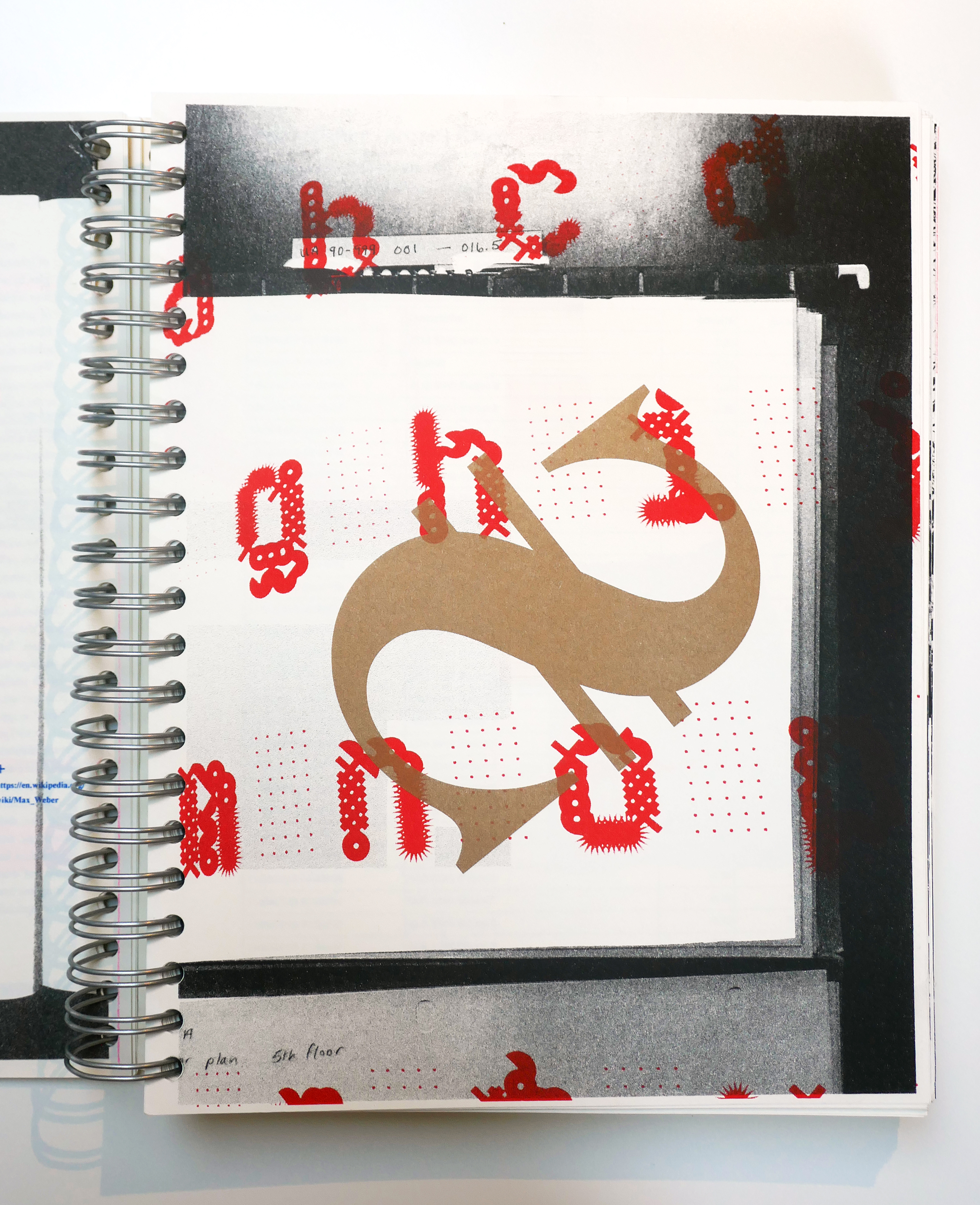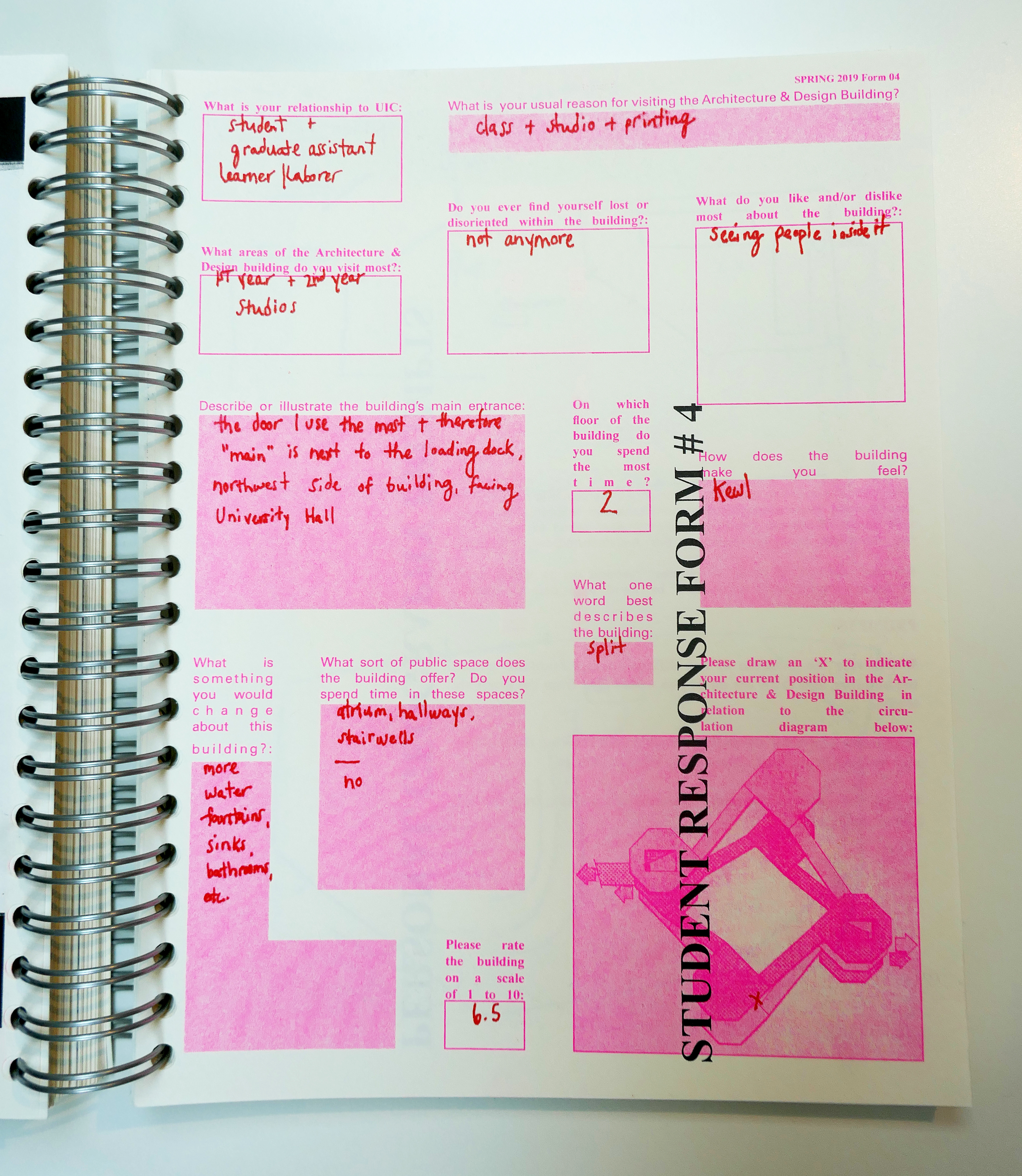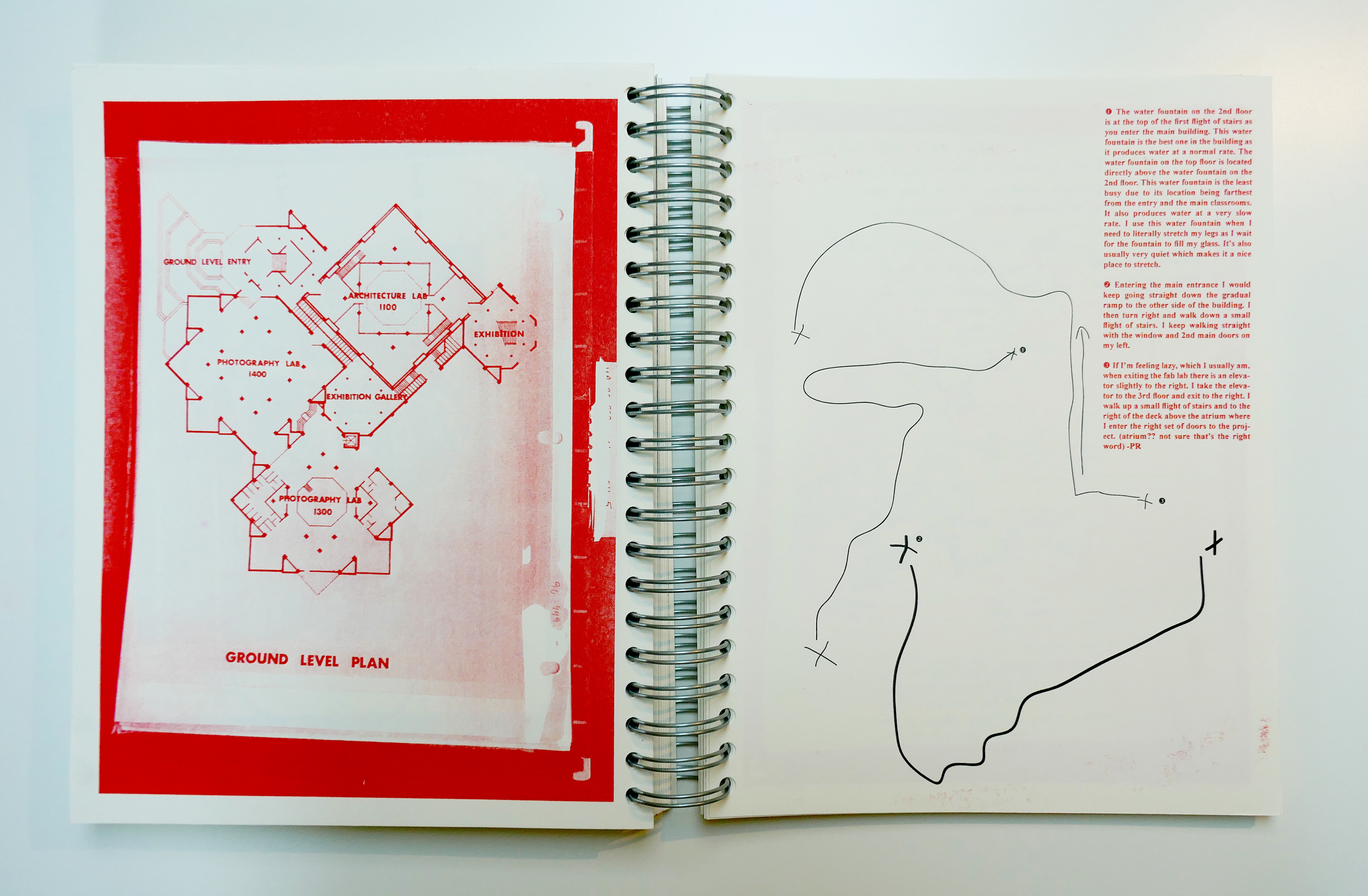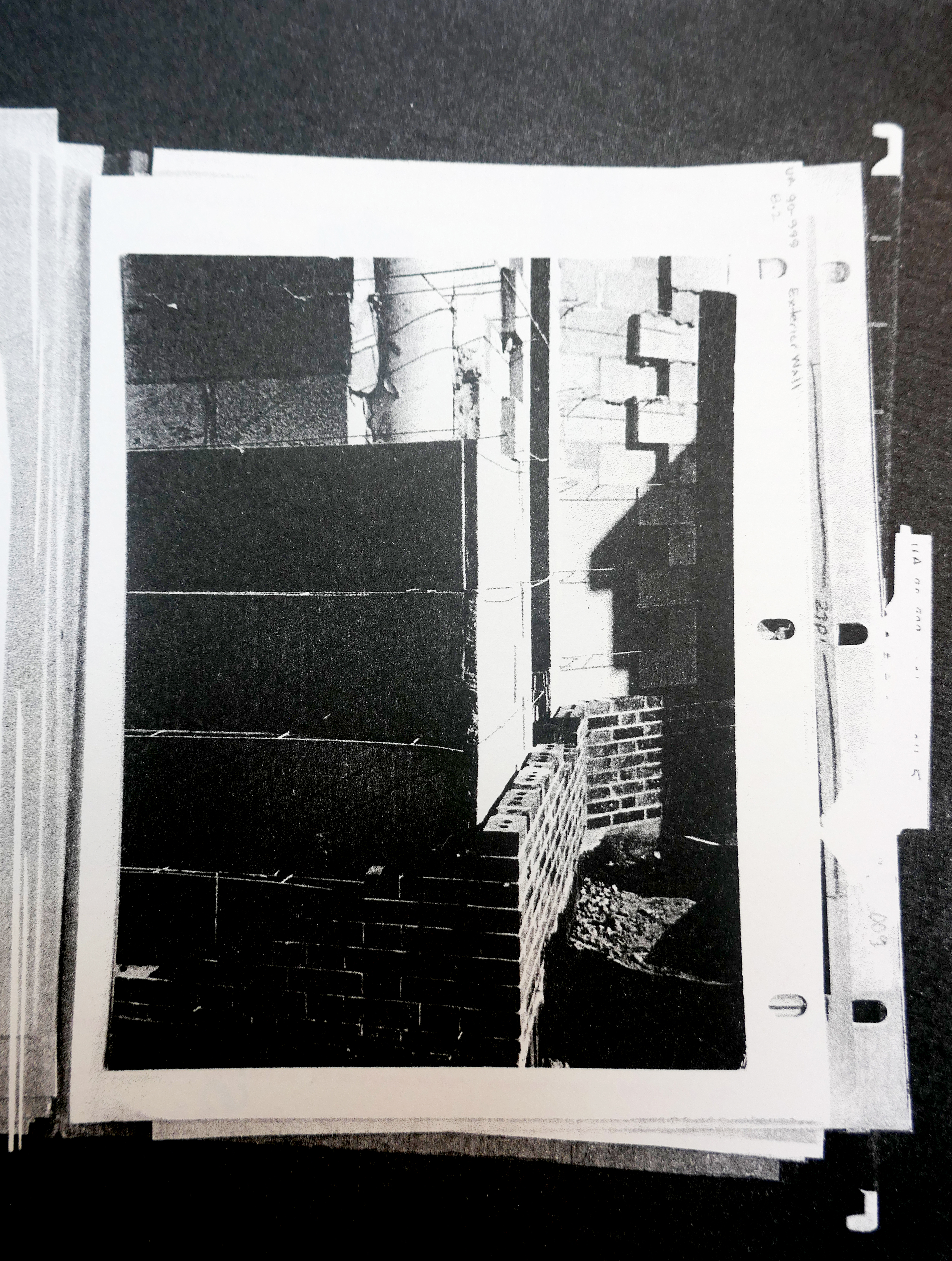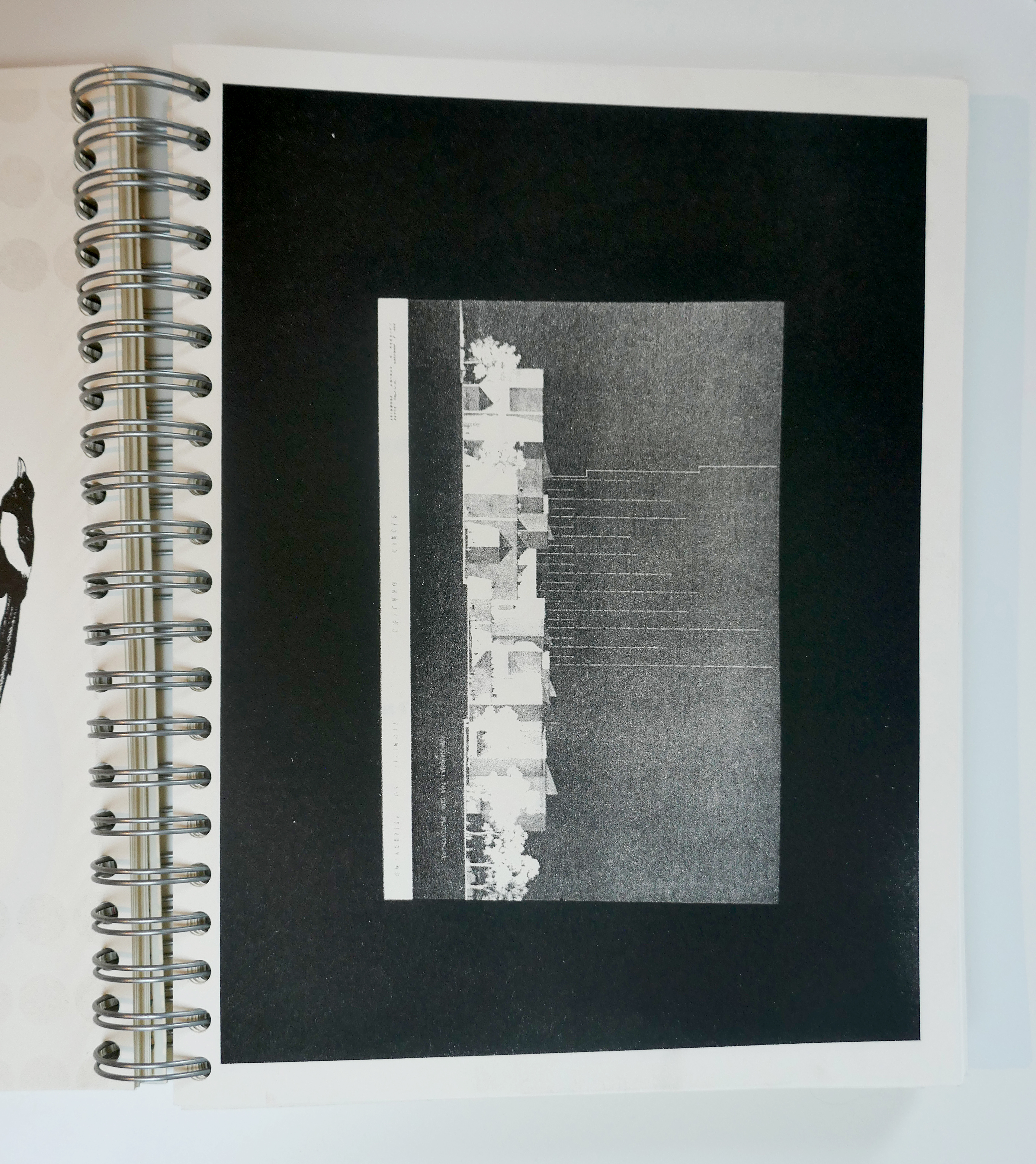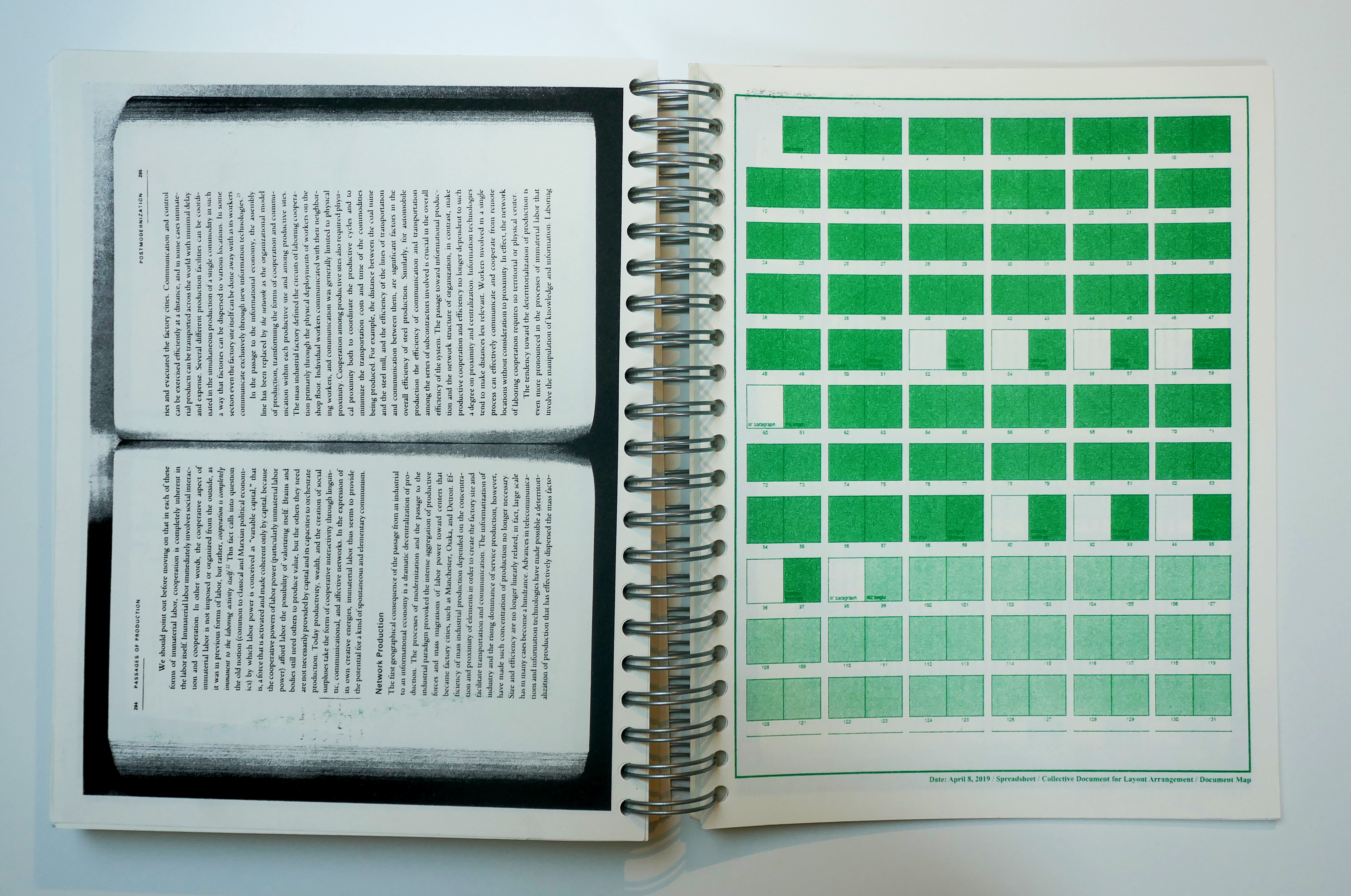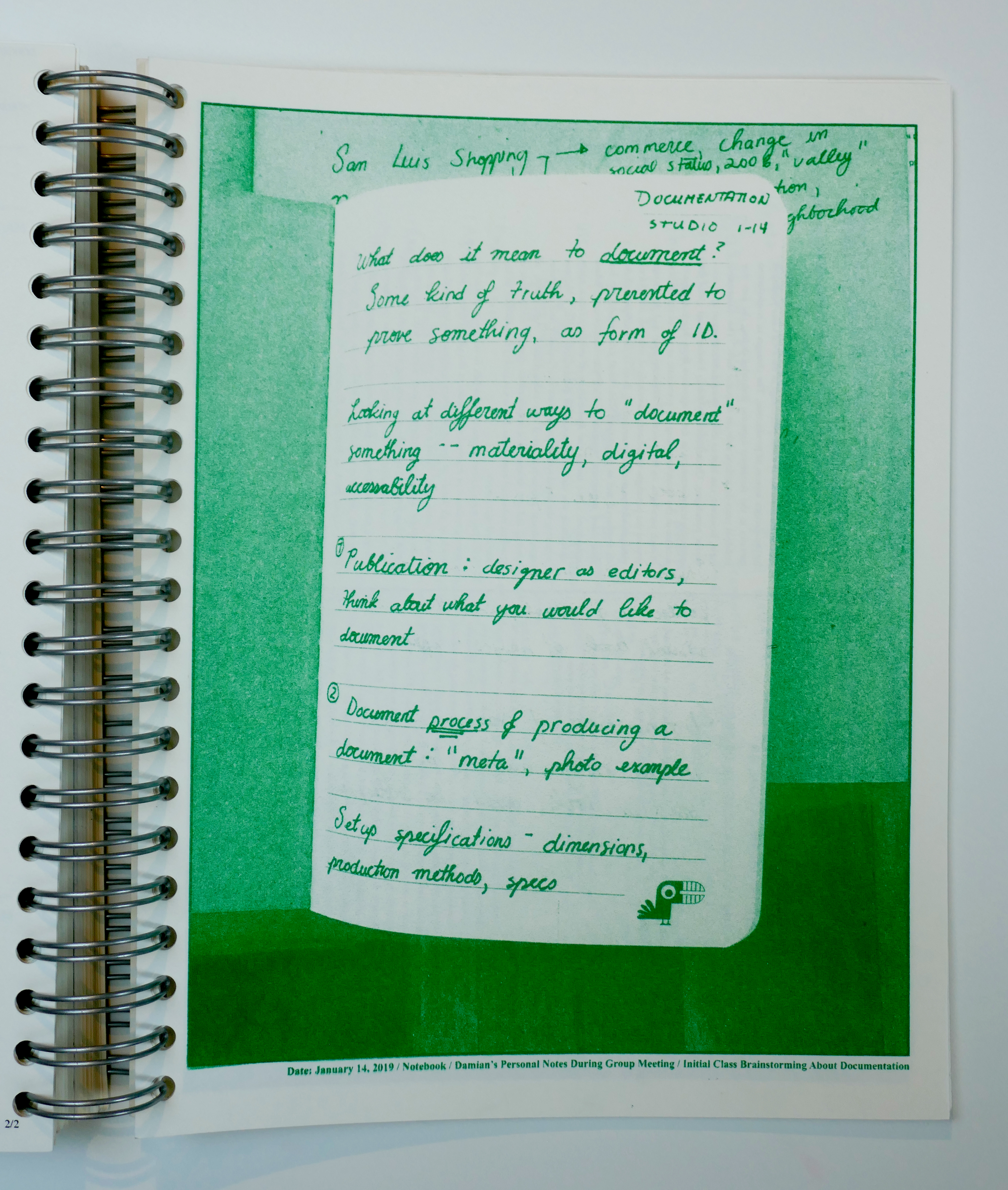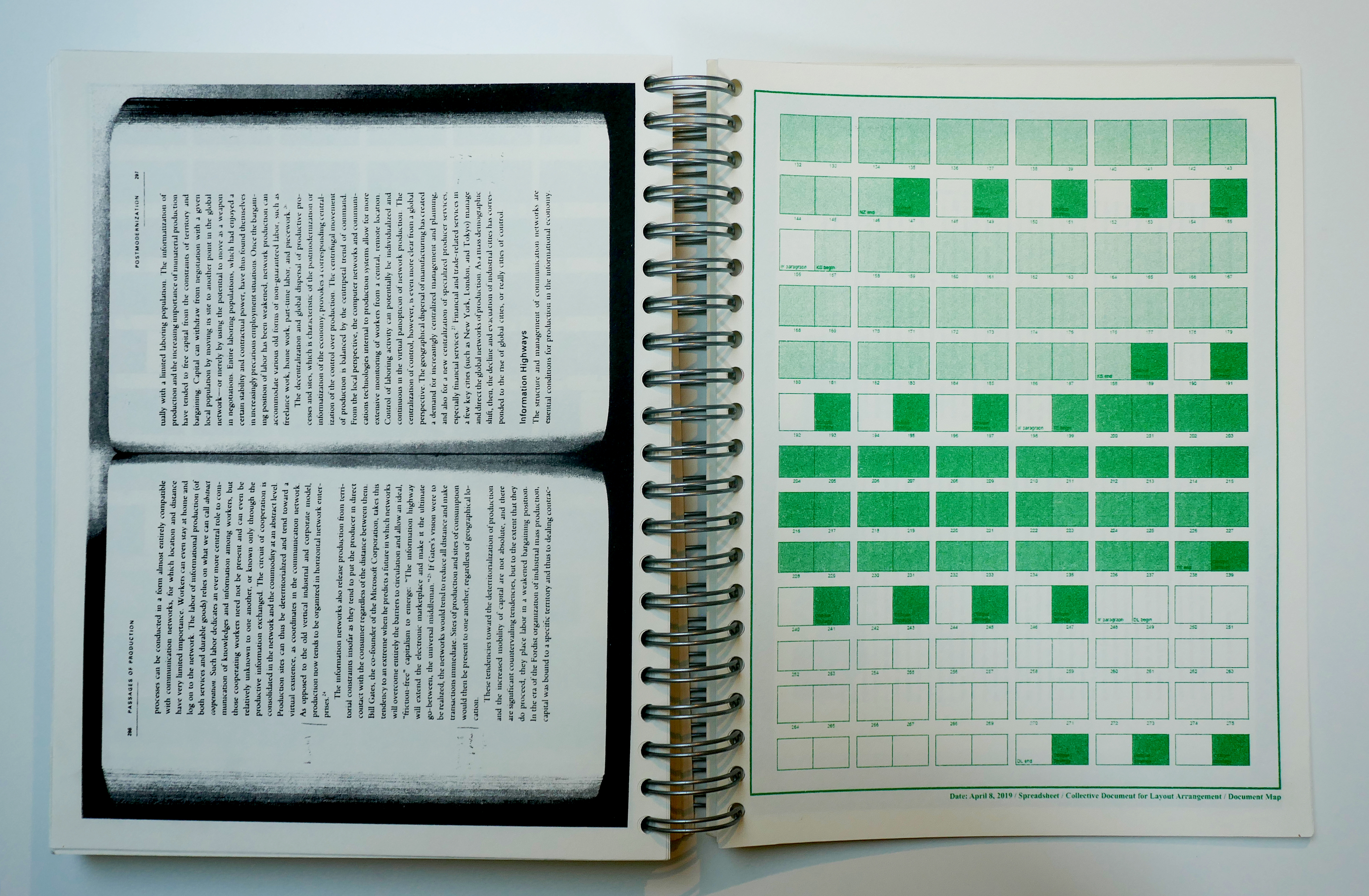Documentation Studio
The publication is a compilation of different material, investigating the idea of a “document” as well as documenting some aspect of the School of Design at UIC. It was a collective effort of my graduate cohort, from planning, creating and finding content, organizing, printing, collating, and binding. We each worked on one individual segment and worked collaboratively on other elements. The cover includes a list of words and phrases referring to a document, compiled from the Wikipedia page for “Document” and the table of contents is also one of our working documents, a spreadsheet used to plan the book.
I documented the connections between students, and our surroundings, specifically the Architecture & Design Building. I compiled a wide range of material, including existing documents from the University Archives, and documents of my own creation. The documents included a 1968 design statement from architect Walter Netsch, original floor plans, and archived photographs from the first phase of campus construction in 1968.
In addition to collecting these documents, I was interested in studying the ways people navigate the building, what language they use to describe certain areas or locations, and what particular spaces they feel most drawn to. I had other students draw maps and give written directions based on a series of prompts. These maps show a personal geography unique to each student. I also created a form for people to fill out, to collect additional information about students’ personal connections to the space.
Also, within the book, there are sections of collaborative prints, which were made each using three passes on the Riso, each by a different student, in a different color. The constraints were to use material connected to our research for the publication, and to consider one of Brian Eno’s Oblique Strategies to guide us.
Additionally, we printed several texts within the book. I worked on a chapter titled “Post-modernization, or the Informatization of Production” from the book Empire, by Antonio Negri and Michael Hardt. The chapter describes a post-Fordist production system, where production happens as you go and the immaterial labor of strategizing and planning is integral. Considering the content of this text, we chose to gather examples of our immaterial labor in the form of whiteboard brainstorming sessions, emails, spreadsheets, notes, and other evidence of the collaborative strategy sessions we held in the process of planning and producing our publication. In reproducing the text, we paired spreads from the book in black with an image from our collection, printed in green.
